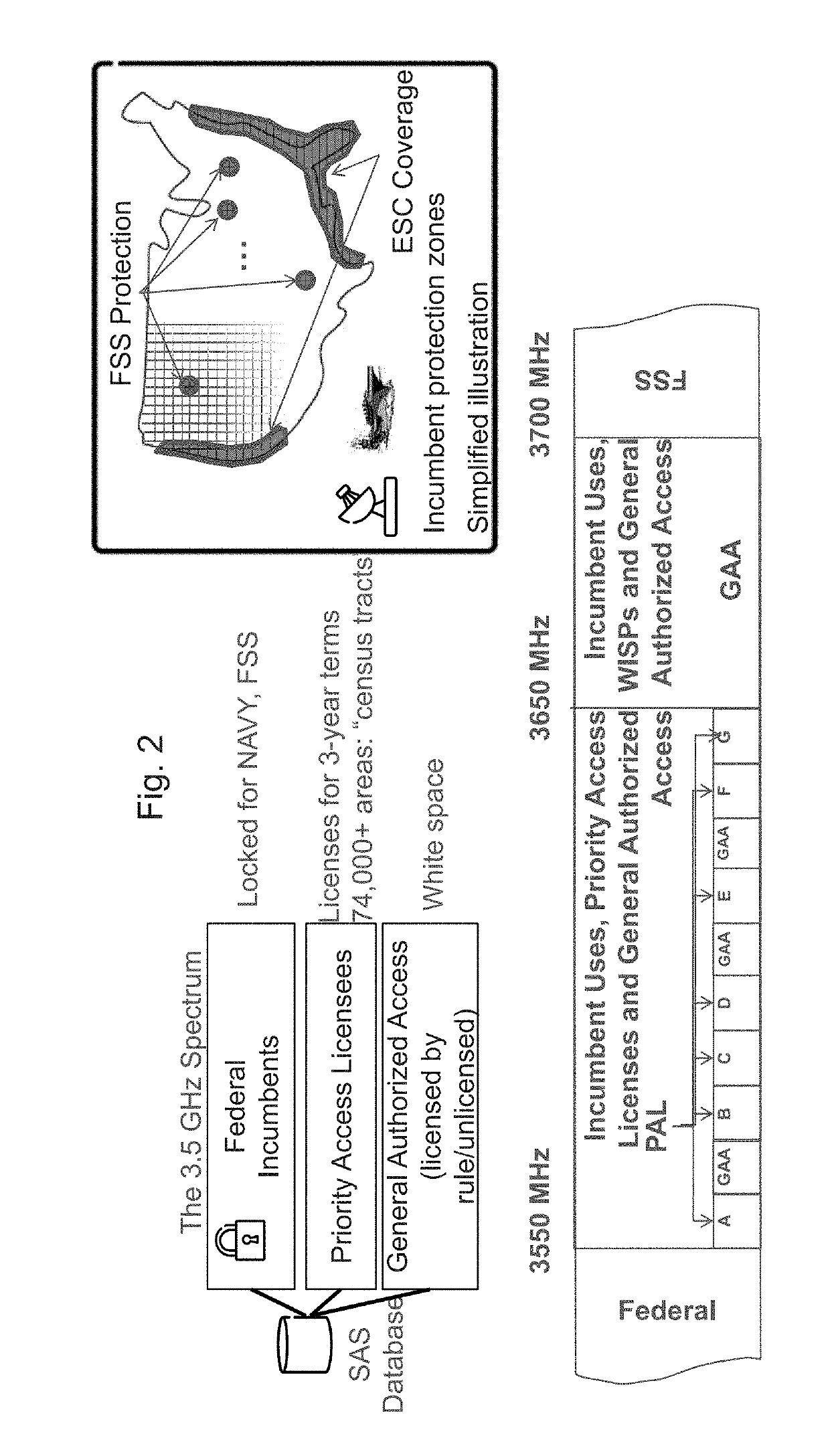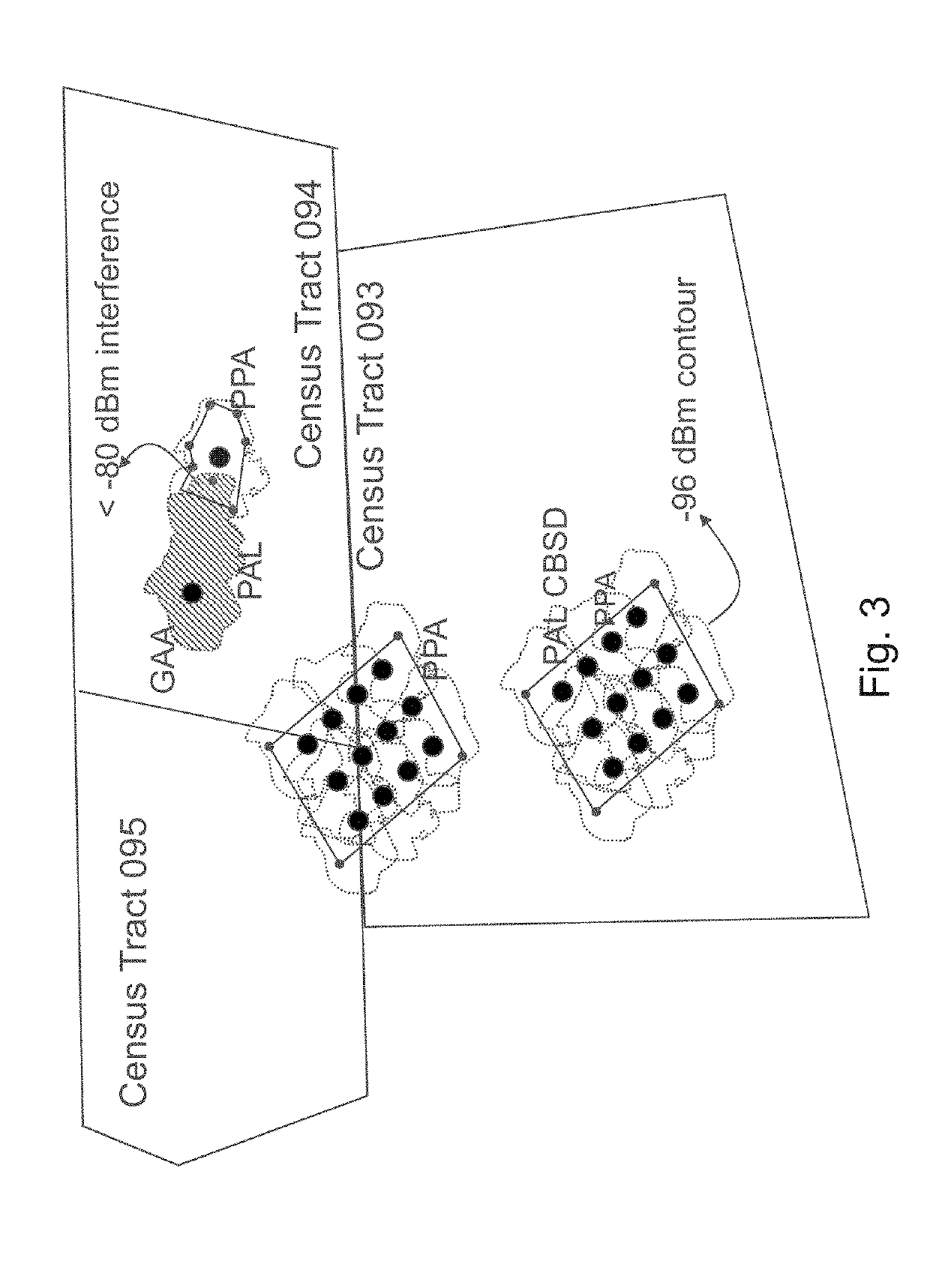Validation of pal protection areas
a technology of protection area and validation, applied in the field of wireless communications, can solve the problems of cbsd not being able to operate close to receiver sensitivity, revenue potential cannot be an excuse to deny other industries access to spectrum, etc., and achieve the effect of simplifying the protection of a cbsd holding a pal and improving consistency regarding interference computation
- Summary
- Abstract
- Description
- Claims
- Application Information
AI Technical Summary
Benefits of technology
Problems solved by technology
Method used
Image
Examples
Embodiment Construction
[0060]Spectrum is the lifeblood of modern cellular communication. Current building practices for wireless mobile communications focus on designing systems for wide area coverage in frequency bands that roughly extend between 400 MHz to 6 GHz. The traffic growth on mobile networks has grown to the point where the mobile industry is consistently starved for spectrum. Thus, improving access to spectrum by means of sharing of spectrum is of much interest to regulators.
[0061]In unlicensed bands, access to spectrum is usually opportunistic and sharing through polite coexistence. Sharing spectrum using licensed shared access (LSA) or authorized shared access (ASA) usually propose a division of rights of use, which may be based on time of use or geographical constraints between mobile operators and an incumbent user.
[0062]A typical use of this scenario is to enable use of a band that is available for licensed users in some markets, but is being restricted in others because of incumbents, su...
PUM
 Login to View More
Login to View More Abstract
Description
Claims
Application Information
 Login to View More
Login to View More - R&D
- Intellectual Property
- Life Sciences
- Materials
- Tech Scout
- Unparalleled Data Quality
- Higher Quality Content
- 60% Fewer Hallucinations
Browse by: Latest US Patents, China's latest patents, Technical Efficacy Thesaurus, Application Domain, Technology Topic, Popular Technical Reports.
© 2025 PatSnap. All rights reserved.Legal|Privacy policy|Modern Slavery Act Transparency Statement|Sitemap|About US| Contact US: help@patsnap.com



